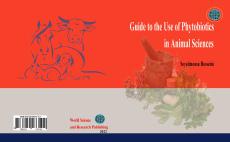Guide to the Use of Phytobiotics in Animal Sciences
Keywords:
Herbal medicine, Livestock, Animal scienceSynopsis
Significant costs are incurred by the livestock industry for the use of antibiotics for the treatment and prevention of pathogens. Due to all the positive effects of antibiotics, these compounds remain in meat and eggs and are transmitted to humans through the consumption of animal products. This makes the pathogens of the human body resistant to antibiotics, and antibiotics are not effective when people have an illness or infection. In this century, this is one of the problems of human societies and scientists are looking to solve this problem. Modern diseases are all caused by antibiotic resistance. Certainly, the replacement of medicinal plants will create a great revolution in the livestock industry. At present, the change of direction and orientation of large pharmaceutical companies towards herbal medicines shows the attention to this field of industry. Medicinal plants are considered important alternatives to growth-promoting antibiotics in the livestock industry due to their effective substances. Medicinal plants have no side effects or environmental problems. Also, it causes meat to taste good, improve gastrointestinal function, have antimicrobial effects, extensive antioxidant activity, stimulate the immune system and improve nutrient absorption. By optimizing the extraction of active ingredients in medicinal plants, we can produce a variety of herbal medicines and growth stimulants needed by the livestock industry in the world, thereby eliminating antibiotics in livestock and poultry diets and increasing the profitability and health of the community. (Text in Persian)

Downloads
Published
Series
License

This work is licensed under a Creative Commons Attribution-NonCommercial-NoDerivatives 4.0 International License.









